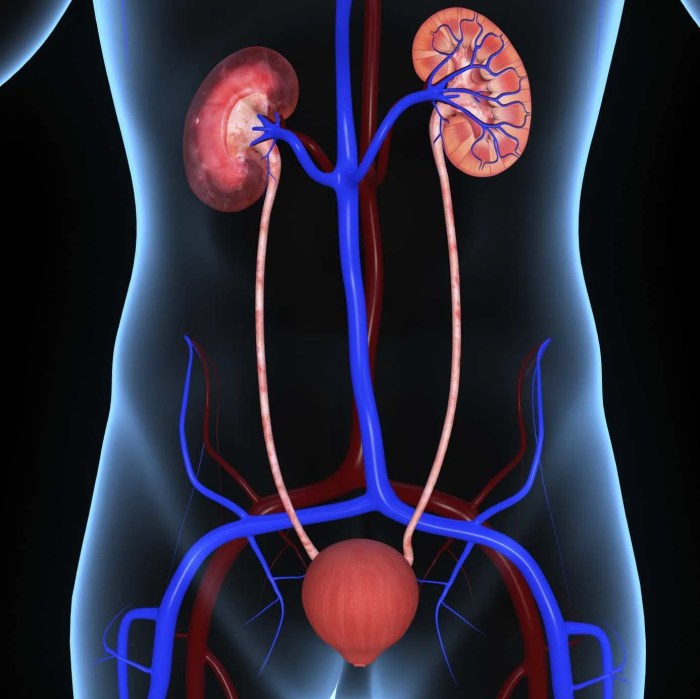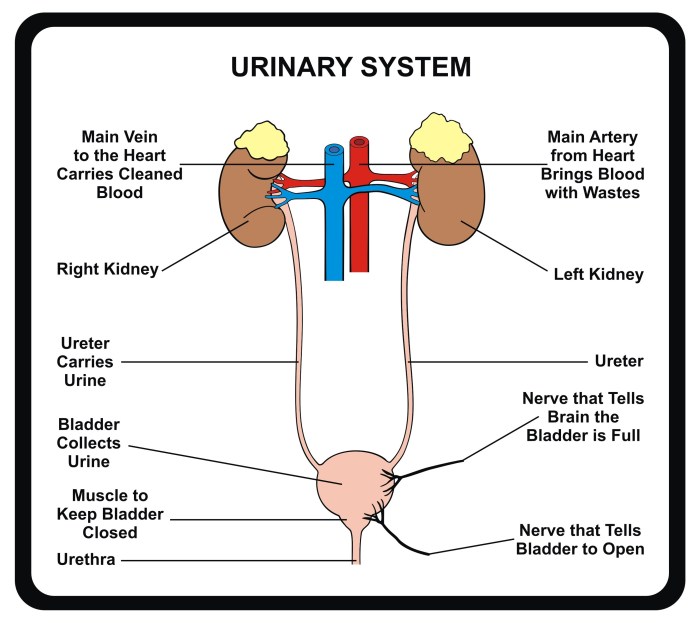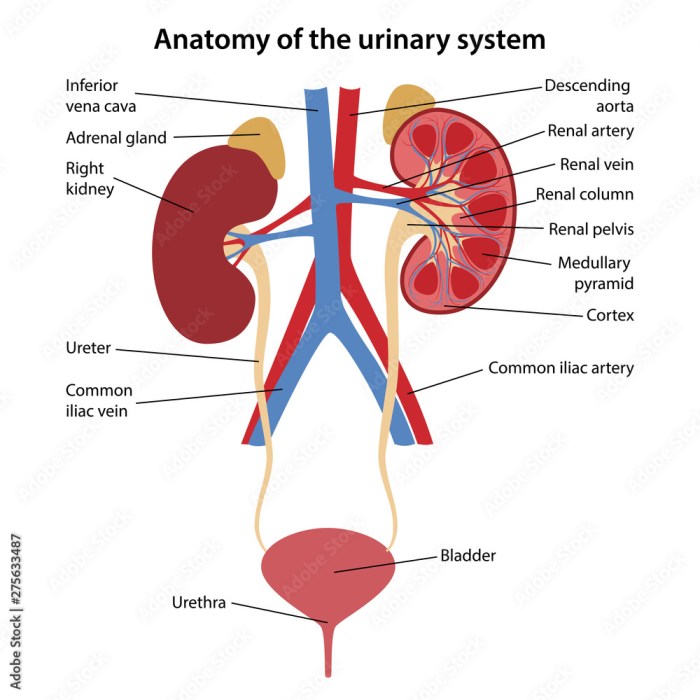What system rids the body of nitrogen-containing wastes is a crucial topic that delves into the intricate workings of the human body. Nitrogenous wastes, primarily in the form of urea, are byproducts of protein metabolism and must be effectively eliminated to maintain optimal health.
This exploration unveils the intricate mechanisms responsible for this vital process, providing a deeper understanding of the urinary system and its indispensable role in maintaining nitrogen balance within the body.
The urinary system, comprising the kidneys, ureters, bladder, and urethra, plays a central role in the elimination of nitrogenous wastes. The kidneys, acting as highly specialized filters, meticulously remove these waste products from the bloodstream through a process known as glomerular filtration.
The resulting filtrate, composed of waste products, water, and essential solutes, is then channeled through the ureters to the bladder for storage. Ultimately, the accumulated urine is expelled from the body via the urethra during the process of urination.
Nitrogenous Waste Excretion: What System Rids The Body Of Nitrogen-containing Wastes

Nitrogenous waste is a byproduct of protein metabolism and must be removed from the body to maintain homeostasis. The primary system responsible for eliminating nitrogenous waste is the urinary system.
Urinary System
The kidneys are the primary organs of the urinary system. They filter blood to remove nitrogenous waste, excess ions, and water, producing urine. Urine is transported from the kidneys to the bladder through ureters. The bladder stores urine until it is excreted through the urethra.
Nitrogen Metabolism
Nitrogen metabolism involves the breakdown of proteins and the conversion of ammonia to urea. Protein catabolism occurs in the liver and releases ammonia as a byproduct. The urea cycle, also occurring in the liver, converts ammonia into urea, which is less toxic and more easily excreted.
Excretion of Nitrogenous Wastes, What system rids the body of nitrogen-containing wastes
Urine formation involves glomerular filtration, tubular reabsorption, and tubular secretion. Glomerular filtration removes waste products and excess water from the blood. Reabsorption occurs in the proximal tubules, where essential nutrients and water are returned to the blood. Tubular secretion removes additional waste products from the blood into the urine.Urine
output and concentration are regulated by hormones such as antidiuretic hormone (ADH) and aldosterone. Nitrogen balance is maintained by adjusting the amount of nitrogen excreted in the urine.
Clinical Considerations
Disorders affecting the urinary system include kidney failure and urinary tract infections. Kidney function can be assessed through tests such as urinalysis, blood urea nitrogen (BUN), and creatinine levels. Treatment options for disorders related to nitrogenous waste excretion include dialysis, kidney transplantation, and medications.
Commonly Asked Questions
What are the primary nitrogenous wastes produced by the body?
Urea, a product of protein catabolism, is the main nitrogenous waste excreted by the body.
Where does the conversion of ammonia to urea take place?
The liver plays a vital role in detoxifying ammonia and converting it into urea through the urea cycle.
What factors can influence urine output and concentration?
Factors such as fluid intake, blood pressure, and hormone levels can affect urine output and concentration.
What are some common disorders that affect the urinary system and nitrogen excretion?
Kidney failure and urinary tract infections are examples of disorders that can impair the urinary system’s ability to effectively eliminate nitrogenous wastes.

